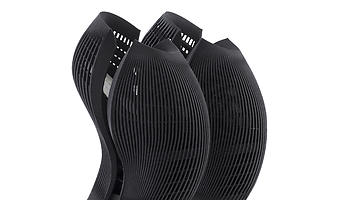
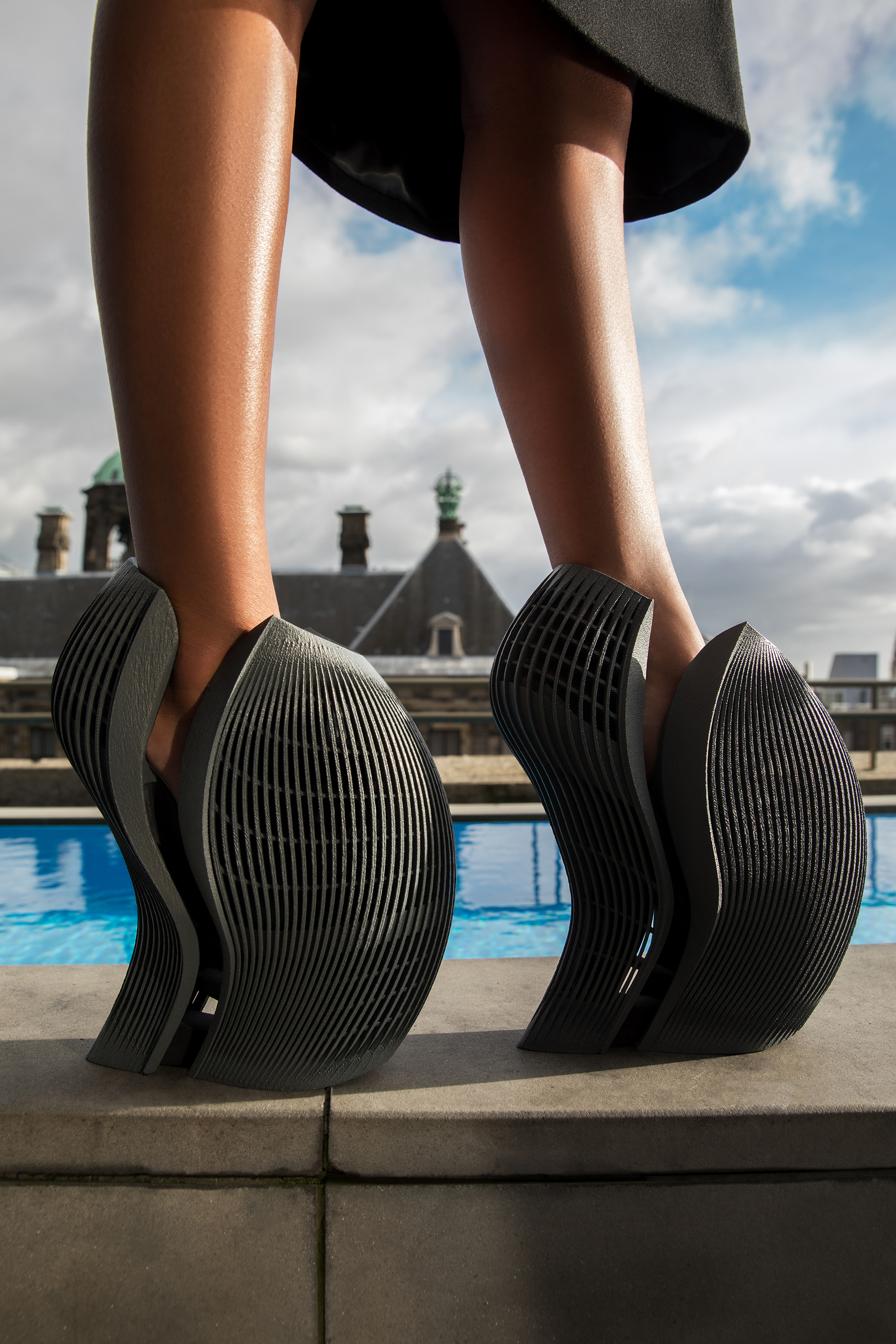
Study: UNX2 and the Process Behind Re-Inventing Shoes
UNStudio’s UNX2 3D-printed shoe, developed by the UNStudio Parameters Platform for United Nude and 3D Systems, was unveiled at the exhibition ‘Re-Inventing Shoes’ at Milan Design Week 2015, New York Fashion Week 2015, and London Fashion Week 2015. The Re-Inventing Shoes project and exhibition invited five leading architects and designers to explore and challenge 3D-printing technology by designing 3D-printed high heels. Here we provide a brief look at the design process behind this ambitious product design challenge.
View an animation of the UNX2 here.
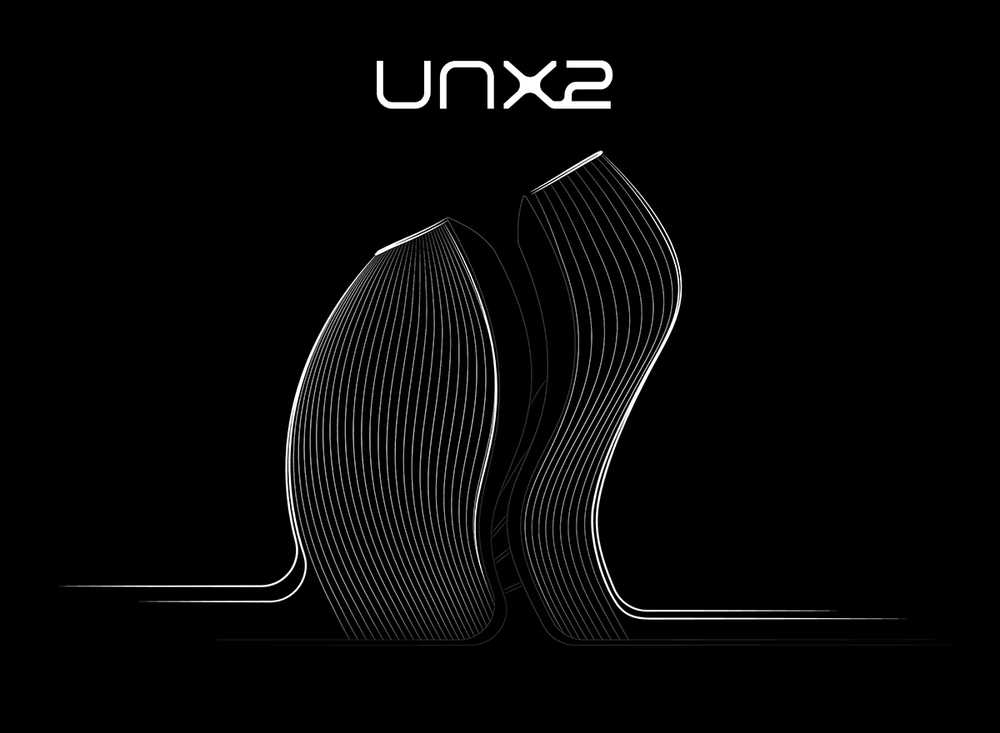
When approached with a design question, UNStudio analyses all underlining principles that affect the geometric solution to that question. In the case of the RIS3 brief, the subjective question is that of a foot, but not just the static foot, a kinetic foot. With 26 structural bones and 33 flexible joints, the foot is one of the most complex operable appendages on the human body. The fact that the internal mechanics of the foot have a direct influence on its outer geometric form became the catalyst for our design concept.
The expression of a foot’s kinetic movement can be reduced to eight specific seam lines that define the geometric curvature in elevation and 15 seam lines that define its profile in plan. These became the basis for our parametric model, allowing all future design options to reference the logic of the foot’s complex movement.
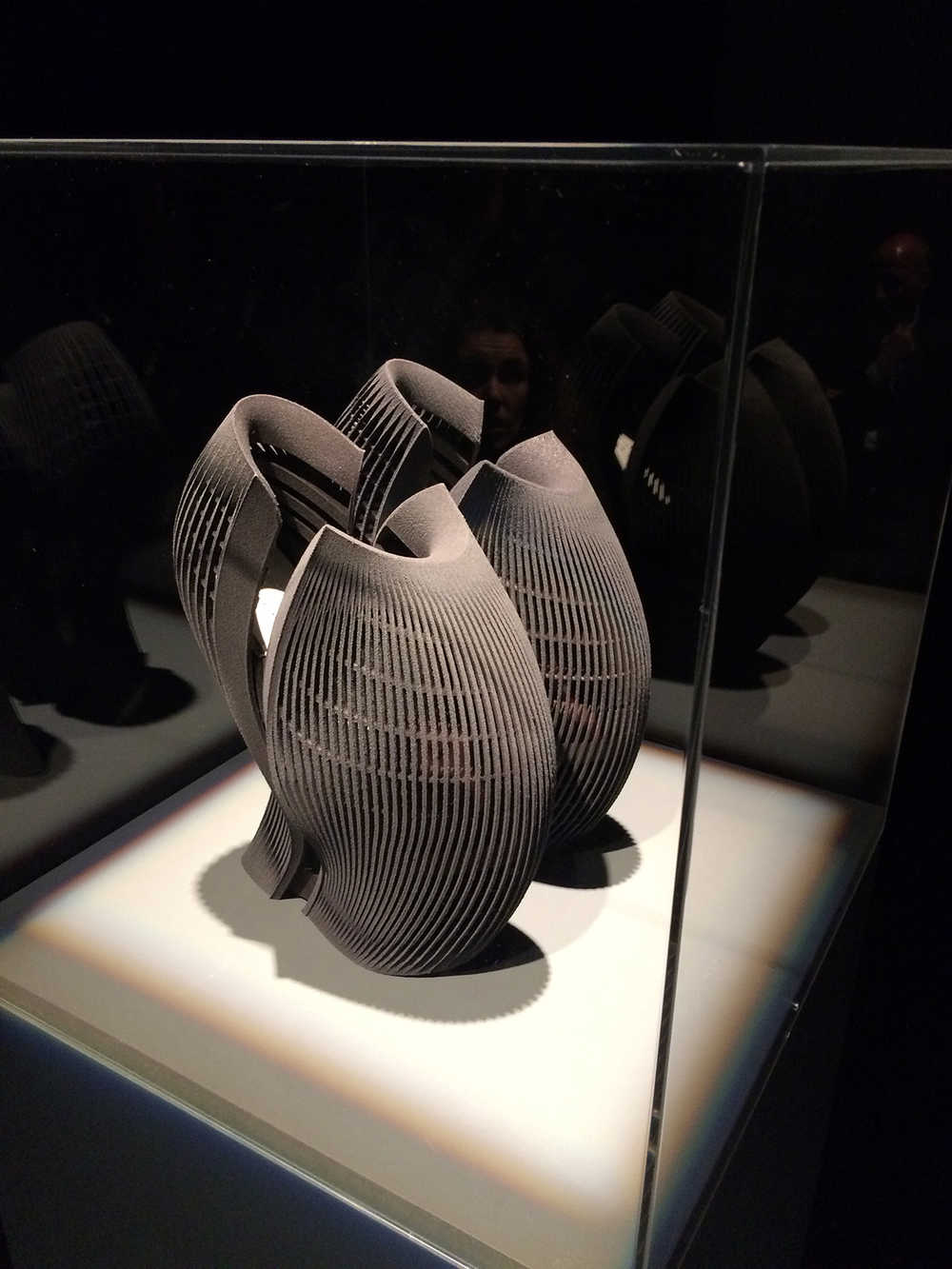
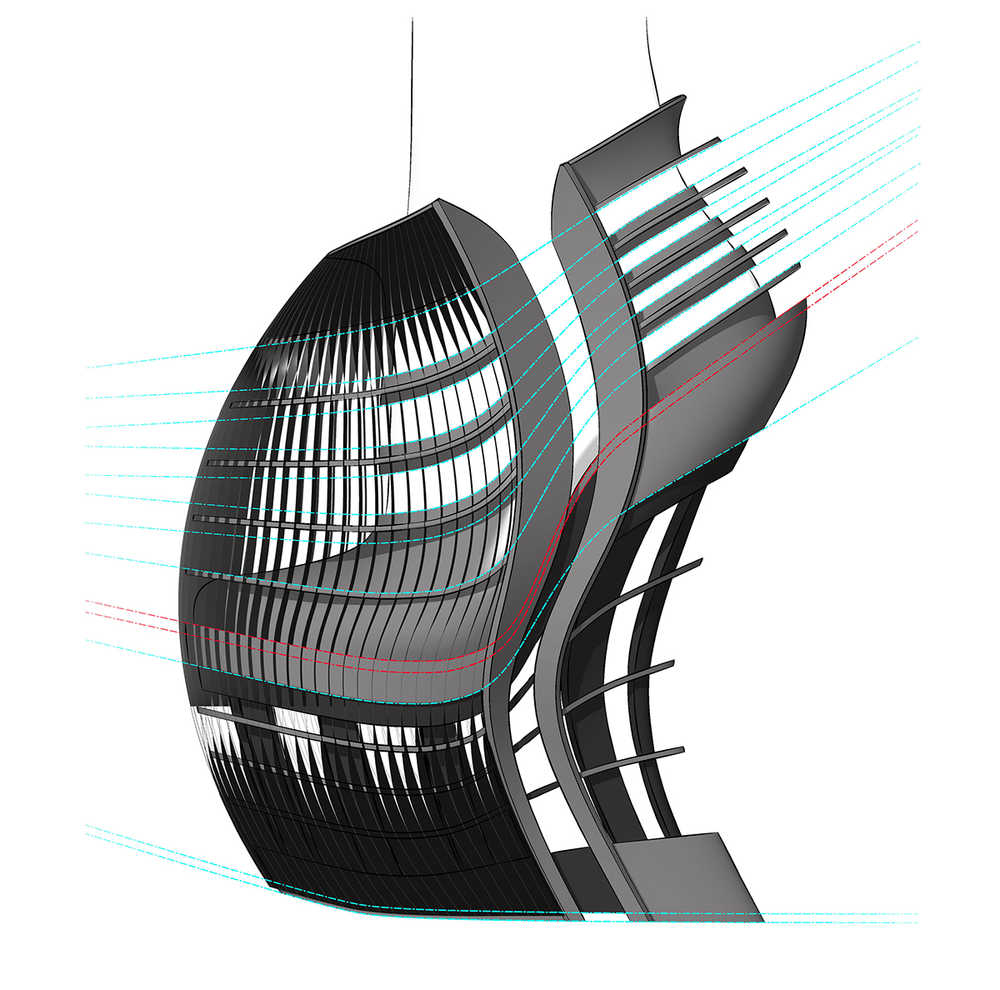
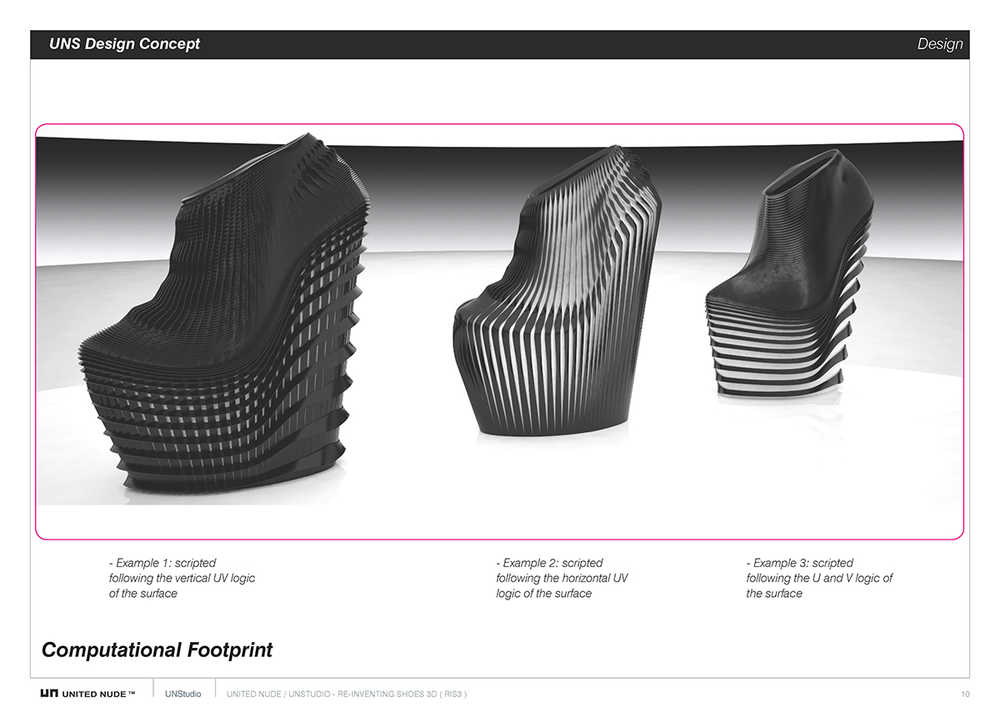
UNStudio has developed a unique workflow centered on live update changes, surface curvature analysis, panel type rationalisation, material optimisation and software integration across multiple platforms. This has enabled us to set up a model based on the foot’s geometric principles that can change shoe size, heel height, formal shape and patterning with minimal effort.
Once the parameters of the base geometry are established parametrically, the basic form can be altered to fit the design constraints given by a fabricator, or the method of production - in this case 3D-printing. This applies to shell thickness, as well as prescribed angles that must maintain a specific degree, while the rest of the shoe can scale in multiple directions.
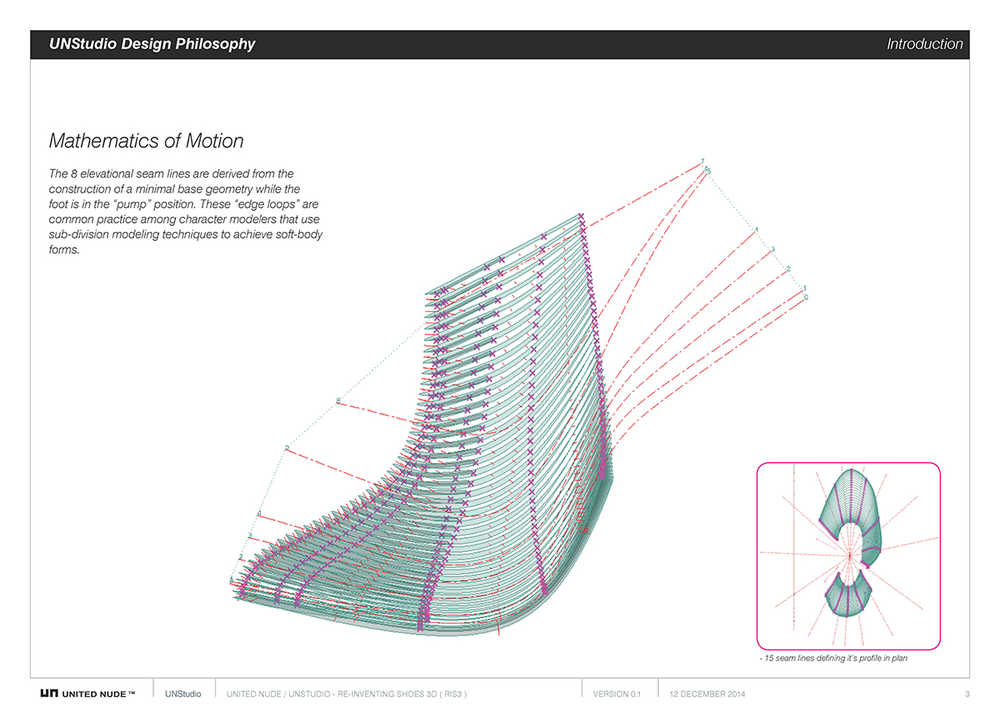
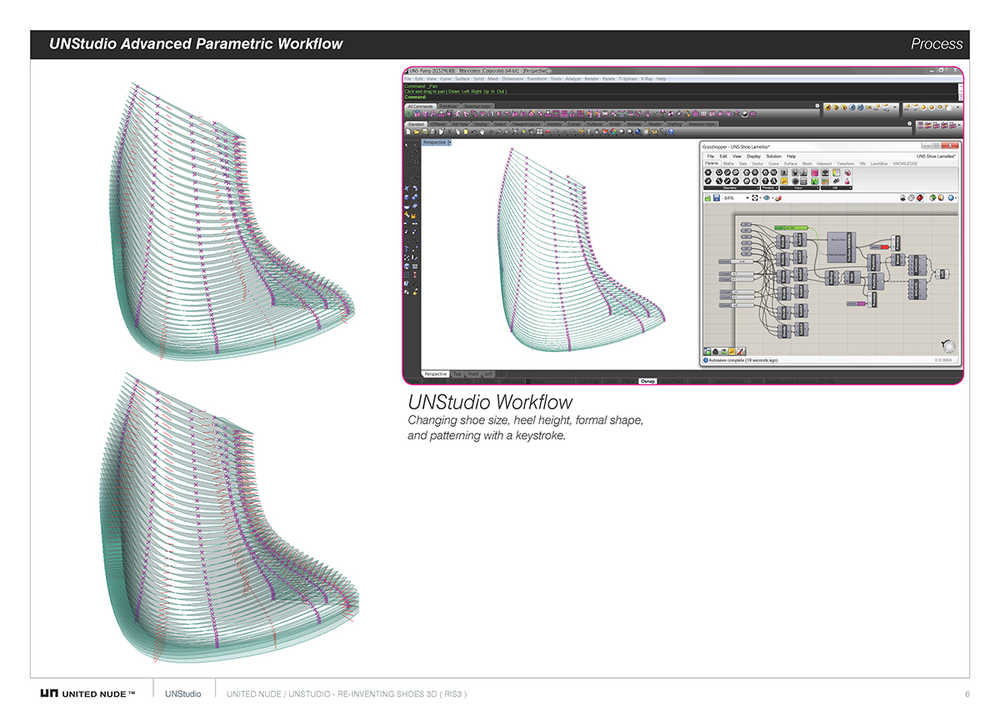
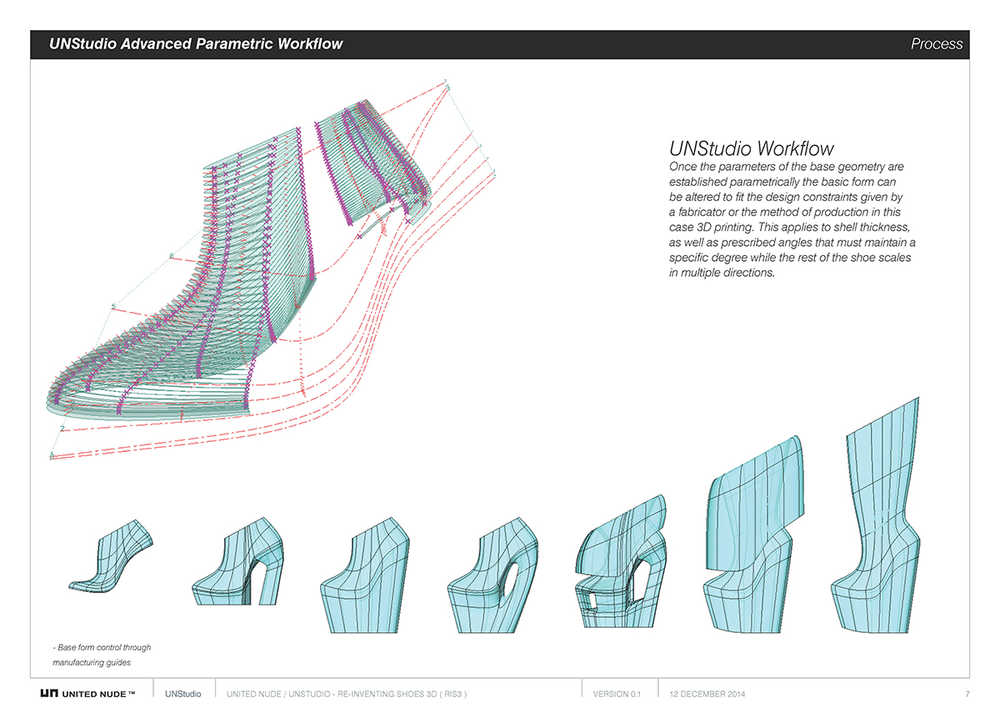
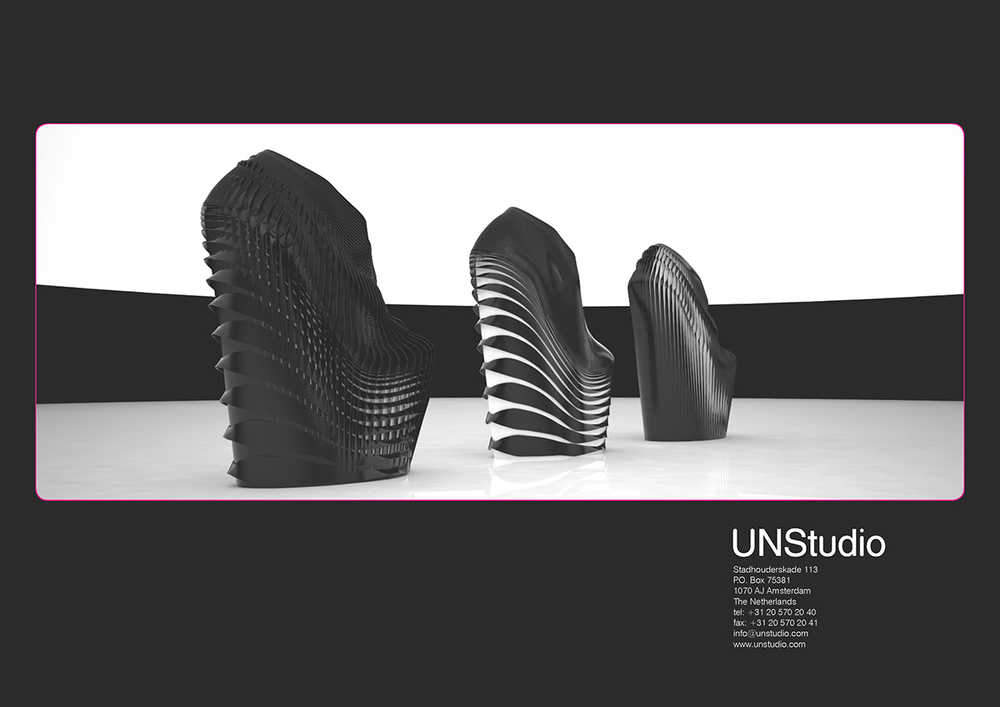
UNStudio Team: Ben van Berkel with Harlen Miller, William de Boer
